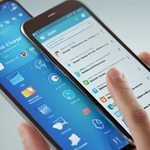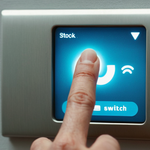
The Change Healthcare data breach represents a watershed moment in American healthcare security, representing the largest verified breach of protected health information at any HIPAA-regulated entity in history. As of the most recent official confirmation, the breach compromised the sensitive data of approximately 192.7 million individuals across the United States, affecting nearly 60 percent of the American population. This unprecedented incident is absolutely legitimate and has been thoroughly verified through multiple independent governmental, regulatory, and legal channels. The breach occurred on February 21, 2024, when the ALPHV/BlackCat ransomware gang deployed a sophisticated attack against Change Healthcare, a subsidiary of UnitedHealth Group and the nation’s largest medical claims processor handling approximately 15 billion transactions annually and nearly 40 percent of all healthcare claims. What makes this breach definitively legitimate is not just the overwhelming volume of official documentation confirming its reality, but the profound and measurable impact it had on the functioning of America’s healthcare system, the financial devastation experienced by healthcare providers nationwide, and the comprehensive regulatory investigations that have ensued.
The Scale and Scope of an Unprecedented Healthcare Crisis
Change Healthcare’s role within the American healthcare infrastructure cannot be overstated when assessing the legitimacy and significance of this breach. The company functions as a healthcare clearinghouse that stands in the middle of medical claims processing, connecting physicians, hospitals, pharmacies, and health insurance companies through its digital platforms. When Change Healthcare’s systems went offline following the cyberattack, the consequences reverberated throughout the entire healthcare sector in ways that immediately and undeniably proved the breach was real. Healthcare providers reported massive disruptions to their ability to verify patient insurance coverage, submit medical claims electronically, receive payments for services rendered, and process prescription refills at pharmacies. The American Hospital Association conducted a survey that revealed the devastating scope of the disruption: 94 percent of hospitals reported financial impacts, 77 percent experienced service disruptions, 80 percent lost revenue from unpaid claims, and 36 percent had their claims payments completely suspended. These operational impacts were not theoretical consequences—they represented an existential threat to thousands of medical practices and healthcare facilities that depend on prompt claim reimbursement for their financial survival.
The legitimacy of the breach is evidenced by the extraordinary financial toll documented across the healthcare sector and at UnitedHealth Group itself. By the end of the first quarter of 2024, UnitedHealth Group had recorded $870 million in cyberattack-related costs, with projections reaching between $1 billion and $1.15 billion by year’s end. By September 2024, the company had spent approximately $1.521 billion in direct breach response costs alone, with total cyberattack impacts exceeding $2.457 billion. These astronomical figures are corroborated by the $2 billion in relief payments that UnitedHealth Group subsequently distributed to affected healthcare providers struggling to maintain operations. The American Medical Association survey captured the human dimension of this financial catastrophe through direct quotes from devastated practitioners, including one physician stating “This cyberattack is leading me to bankruptcy, and I am just about out of cash,” another noting “This crippled our brand new practice. I am keeping the lights on using personal funds,” and a rural practice owner warning the incident “may bankrupt our practice of 50 years in this rural community.” These were not hypothetical concerns or exaggerated claims—they represented genuine financial crises affecting real healthcare practitioners.
Official Government Verification and Regulatory Investigation
The legitimacy of the Change Healthcare breach has been conclusively established through comprehensive verification by multiple governmental agencies and regulatory authorities. On July 19, 2024, Change Healthcare formally filed a breach report with the Department of Health and Human Services Office for Civil Rights, satisfying the regulatory requirement to notify federal authorities of breaches affecting protected health information. While Change Healthcare initially submitted a placeholder estimate of 500 affected individuals because its investigation was ongoing, the company subsequently updated this figure multiple times as its data review progressed. By October 24, 2024, Change Healthcare had confirmed that approximately 100 million individuals had been affected, making it definitively the largest known healthcare data breach ever reported to federal regulators, surpassing the previous record of 78.8 million individuals affected in the 2015 Anthem Inc. breach. The estimate continued to expand as Change Healthcare’s investigation deepened, ultimately reaching 192.7 million affected individuals as of July 31, 2025, when the company notified the Office for Civil Rights that its data review and notification process were substantially complete.
The official government investigation into whether Change Healthcare violated HIPAA compliance requirements represents another definitive marker of the breach’s legitimacy. The HHS Office for Civil Rights has formally opened a HIPAA compliance investigation to determine whether Change Healthcare and its parent company, UnitedHealth Group, were fully compliant with applicable regulations prior to the ransomware attack. This investigation was rapidly launched due to the unprecedented scale and magnitude of the breach, though it is expected to take months or even years before conclusions are reached. The OCR’s decision to investigate and the subsequent intensification of its investigations across the healthcare sector demonstrate official recognition of the breach’s legitimacy and the potential systemic vulnerabilities it exposed. Additionally, the HHS issued a “Dear Colleagues” letter from OCR Director Melanie Fontes Rainer reminding healthcare entities of their regulatory obligations regarding business associate agreements and timely breach notification, acknowledging the seriousness with which federal regulators are treating the incident. Multiple state attorneys general, including Nebraska’s Attorney General Mike Hilgers, have filed lawsuits against Change Healthcare, Optum, and UnitedHealth Group, alleging violations of consumer protection and data security laws based on the failure to implement adequate cybersecurity measures, including the lack of multifactor authentication on critical systems.
Congressional Scrutiny and Executive Accountability
Congressional examination of the Change Healthcare breach provides overwhelming documentary evidence of its legitimacy and the serious nature of the security failures that enabled it. On May 1, 2024, Andrew Witty, Chief Executive Officer of UnitedHealth Group, testified before the Senate Finance Committee regarding the cyberattack, providing under oath detailed information about how the breach occurred and the company’s response. Witty disclosed that the attackers gained initial access to Change Healthcare’s network by using stolen credentials to access a Citrix portal used for remote access to company systems, and crucially, this remote access portal did not have multifactor authentication enabled—a fundamental security measure that is an industry standard and a HIPAA requirement. When confronted by members of the House Energy and Commerce Committee about the absence of this basic security safeguard at one of the company’s most critical systems, Witty acknowledged that while Change Healthcare was a relatively older company with legacy technologies that UnitedHealth had been working to upgrade since its acquisition in 2022, “for some reason, which we continue to investigate, this particular server did not have MFA on it.” This admission of preventable negligence directly from the company’s CEO constitutes powerful evidence that the breach resulted from genuine security failures, not fabricated claims.
Congressional interest in the breach extended beyond single hearings, as multiple committees demanded comprehensive answers about how the breach occurred, what systems failed, and what remediation measures had been implemented. Senators Josh Hawley and Richard Blumenthal sent a scathing letter to UnitedHealth Group stating that “While we recognize that UHG was indeed the victim of an outside attack, the entire sector is now the victim of UHG’s lack of preparedness and built in redundancies, which could have potentially mitigated the widespread impact of the breach.” The House Energy and Commerce Committee convened hearings specifically to explore cybersecurity vulnerabilities in the healthcare sector and discuss solutions to prevent future attacks. Senator Ron Wyden sent detailed follow-up questions to UnitedHealth Group seeking specific information about the security audits that were conducted before the breach, whether the compromised server had been included in those audits, and whether third-party auditors had recommended implementing multifactor authentication on that system. These congressional investigations and inquiries represent substantial official recognition that the breach is legitimate and merits serious policy attention.

Verification of the Cyberattack and Ransomware Payment
The legitimacy of the Change Healthcare breach is further corroborated by the identification of the specific ransomware group responsible for the attack and verification of the ransom payment that was made. The ALPHV/BlackCat ransomware gang claimed responsibility for the February 21, 2024 attack against Change Healthcare, and this attribution has been verified by cybersecurity researchers, the Federal Bureau of Investigation, and multiple government agencies including the Cybersecurity and Infrastructure Security Agency. BlackCat is a known sophisticated ransomware family that originated in November 2021 and operates under a ransomware-as-a-service model, leasing its malicious code to affiliates who carry out specific attacks in exchange for a share of the profits. The group is known for using the Rust programming language to create customizable variants of its ransomware that are difficult to detect and analyze, and for employing double extortion schemes where data is stolen and encrypted before the attackers demand payment for both the decryption key and the promise to delete stolen data.
UnitedHealth Group CEO Andrew Witty disclosed under oath before Congress that he personally decided to pay a ransom to the attackers, describing it as “one of the hardest decisions I’ve ever had to make,” and confirmed that the company paid $22 million in Bitcoin to the cybercriminals. This ransom payment was verified by cryptocurrency researchers who tracked the Bitcoin transaction to a wallet associated with the ALPHV/BlackCat group, further confirming the authenticity of the attack. Significantly, despite making the $22 million ransom payment, UnitedHealth Group did not recover its data and cannot confirm that the attackers deleted the stolen information, revealing a common outcome in ransomware situations where payment does not guarantee data destruction. The ransom payment amount and the circumstances surrounding it have been reported across multiple independent news sources, cybersecurity firms, and government reports, all consistently confirming the same figure and date range. This convergence of independent verification from multiple reliable sources provides powerful confirmation that the cyberattack and ransom payment are genuine.
Data Breach Notification Legitimacy and Consumer Communication
As individuals across the nation began receiving notification letters in July 2024 about the Change Healthcare breach, legitimate questions emerged about whether these communications were genuine or elaborate scams. The legitimacy of these breach notification letters has been definitively established through verification by multiple independent sources and government agencies. The letters received by impacted individuals are authentic documents generated by Change Healthcare in compliance with HIPAA breach notification requirements, and the notification process began on July 20, 2024, after Change Healthcare obtained sufficient data review to start identifying and notifying affected individuals. To verify the legitimacy of breach notification letters, individuals should confirm that the letter contains specific information: it should be addressed to them personally at their home address, include their full name, and detail the types of information potentially compromised, such as health insurance data including policy numbers, medical records, test results, images, billing information, Social Security numbers, and driver’s license data. Legitimate letters from Change Healthcare include a six-page format and offer two years of complimentary credit monitoring and identity theft protection services, with contact information for enrolling in these services.
Change Healthcare established a dedicated call center to support impacted individuals, operating at 1-866-262-5342 and available Monday through Friday from 8 a.m. to 8 p.m. Central Time. The company also created a comprehensive online substitute notice at https://www.changehealthcare.com/hipaa-substitute-notice that provides detailed information about the breach, the types of data involved, steps individuals can take to protect themselves, and enrollment information for the complimentary credit monitoring and identity theft protection services. Multiple news organizations, including First Coast News, WGAL, and other local television stations, independently verified that the Change Healthcare breach notification letters are legitimate and not scams, confirming that the letters match details on the official Change Healthcare website and represent genuine notification of a real data breach. The availability of free credit monitoring services through IDX, a legitimate identity protection company, for all individuals who believe their information may have been impacted provides additional confirmation of the legitimacy of the breach response, as this represents a standard industry practice following major data breaches.
Scope and Nature of Compromised Information
The legitimacy of the Change Healthcare breach is further established by the documented scope of information that was compromised and made available to the attackers. According to official notifications sent to affected individuals and regulatory filings, the data compromised in the breach includes multiple categories of sensitive personal and health information that represent exactly the type of data one would expect to find at a healthcare claims processor. The compromised information includes contact information such as names, addresses, phone numbers, email addresses, and dates of birth; health insurance information including primary, secondary, and other health plan details, insurance company names, member and group ID numbers, and Medicaid-Medicare-government payor ID numbers; health information including medical record numbers, names of providers, diagnoses, medicines, test results, medical images, and descriptions of care and treatment provided; billing, claims, and payment information including claim numbers, account numbers, billing codes, payment card information, financial and banking information, payments made, and balances due; and other personal identifying information including Social Security numbers, driver’s license numbers, state ID numbers, and passport numbers. This comprehensive profile of stolen data reflects exactly what one would expect from a breach at an organization serving as a clearinghouse for medical claims processing, further confirming the breach’s authenticity.
However, importantly, Change Healthcare confirmed that while extensive data was compromised, the investigation did not reveal evidence that complete medical histories or doctors’ charts were included in the files accessed by the attackers. This distinction, while still representing a catastrophic breach of sensitive information, demonstrates that Change Healthcare has been transparent about the specific nature and extent of the data compromise rather than making vague or exaggerated claims. The company also noted that some of the information may have related to individuals who served as guarantors—people who were responsible for paying bills for healthcare services—rather than patients themselves, reflecting the complexity of financial arrangements in healthcare transactions. This level of specificity and nuance in describing the breach, including both what was compromised and what was not, represents authentic communication about a genuine incident rather than fabricated claims designed to create alarm.

Evidence of Secondary Extortion Attempts
An additional indicator of the breach’s legitimacy is the emergence of secondary extortion attempts by other ransomware groups attempting to profit from the stolen data. Following the initial attack by ALPHV/BlackCat in late February 2024, reports emerged in April 2024 that a competing ransomware group called RansomHub was attempting to extort Change Healthcare by threatening to sell the stolen data if payment was not made. This secondary extortion represents a common pattern in major ransomware incidents where the initial attackers’ affiliate relationships break down or the data is passed to other criminal groups seeking additional profit. The emergence of this secondary extortion attempt by RansomHub, including screenshots of allegedly stolen data posted to dark web forums, provides independent verification that a genuine data theft occurred and that valuable information was indeed exfiltrated from Change Healthcare’s networks. The fact that multiple independent criminal groups viewed the stolen data as valuable enough to attempt extortion confirms the authenticity and scope of the breach from an unexpected source.
Legal Response and Class Action Litigation
The legitimacy of the Change Healthcare breach is further substantiated by the comprehensive legal response that has emerged, including multiple class action lawsuits filed in federal courts and consolidated into multidistrict litigation. On June 7, 2024, the United States Judicial Panel on Multidistrict Litigation determined that numerous cases filing against Change Healthcare throughout the federal court system contained “common questions of fact” arising from the cyberattack and that “centralization in the District of Minnesota will serve the convenience of the parties and witnesses and promote the just and efficient conduct of this litigation.” The resulting multidistrict litigation, captioned “In re: Change Healthcare, Inc. Customer Data Security Breach Litigation” (MDL No. 3108), has been assigned to U.S. District Court Judge Donovan W. Frank in the District of Minnesota and consolidates approximately 50 initial lawsuits, with additional cases continuing to be filed. These lawsuits are divided into two main tracks: one addressing claims by individuals whose protected health information was compromised and another addressing claims by healthcare providers who suffered financial losses and operational disruption due to the outage of Change Healthcare’s claims processing systems.
The legitimacy of the breach is evidenced by the serious nature of the allegations being pursued through litigation and the legal theories being employed against the company. The class action complaints allege that Change Healthcare failed to implement reasonable security measures to protect sensitive patient and provider information, including the failure to enable multifactor authentication on critical remote access systems and the failure to properly isolate backup systems from primary systems so that when the primary systems were encrypted by ransomware, the backup systems were also compromised. The complaints also allege that Change Healthcare failed to detect the intrusion in a timely manner—the investigation revealed that hackers had access to Change Healthcare’s systems for nine days before the breach was detected and the systems were taken offline—and that the company was inadequately prepared with incident response plans and business continuity procedures to mitigate the impact of such an attack. These allegations represent substantive claims regarding genuine security failures that resulted in documented harm to individual consumers and healthcare providers, not frivolous or fabricated complaints. As of February 2025, a federal judge has set a deadline of March 21, 2025, for Change Healthcare to file motions to dismiss certain claims, with settlement discussions already underway.
Industry Recognition and Institutional Affirmation
The legitimacy of the Change Healthcare breach receives powerful confirmation from the statements and actions of major healthcare industry organizations that have recognized it as a genuine crisis of unprecedented proportions. Rick Pollack, President and CEO of the American Hospital Association, stated unequivocally that “the Change Healthcare cyberattack is the most significant and consequential incident of its kind against the U.S. healthcare system in history.” The American Hospital Association has issued multiple cybersecurity advisories, provided guidance to members regarding the incident, advocated aggressively for stronger cybersecurity requirements and redundancy standards for healthcare clearinghouses, and worked with lawmakers and regulators to develop policy responses to prevent similar incidents. Congressional members described the breach in equally stark terms, with some stating that “the breach of Change was tantamount to targeting the health care system in its entirety,” underscoring the systemic nature of the threat posed by the compromise of such a critical healthcare infrastructure component. The American Medical Association similarly recognized the gravity of the breach and the devastation experienced by physician practices, advocating for policy changes to prevent future incidents and providing resources to help practices strengthen their cybersecurity posture.
The Office for Civil Rights at the Department of Health and Human Services recognized the unprecedented nature of the breach and issued a “Dear Colleagues” letter reminding all covered entities and business associates of their regulatory obligations regarding cybersecurity, business associate agreements, and timely breach notification. The FBI and Cybersecurity and Infrastructure Security Agency (CISA) issued joint advisories regarding the ALPHV/BlackCat ransomware group, providing technical indicators of compromise and recommendations for defending against similar attacks. These coordinated responses from federal agencies, congressional committees, regulatory authorities, and industry organizations constitute powerful institutional recognition that the Change Healthcare breach represents a legitimate crisis requiring serious policy attention and enforcement action.

Practical Protective Actions for Affected Individuals
The legitimacy of the Change Healthcare breach is underscored by the practical actions that individuals should take to protect themselves if they believe their information may have been compromised. Affected individuals should proactively monitor their credit reports and bank statements for any unusual activity, as these represent concrete actions one would only recommend if facing a genuine breach risk. The federal government has made weekly credit reports available for free from each of the three major credit reporting agencies—Equifax, Experian, and TransUnion—allowing individuals to closely monitor their credit files for unauthorized accounts or suspicious activity. Individuals can place fraud alerts on their credit files by contacting any one of the three major credit reporting agencies, and that agency will notify the other two to place the same alert, providing notification to any potential creditor attempting to open accounts in the individual’s name. For heightened protection, individuals can place a credit freeze on their credit files, which prevents any new accounts from being opened without the individual first unfreezing the credit file through a specific request.
Additionally, affected individuals should change passwords on accounts where they may have used the same username and password that could be exposed in the breach, and should use strong passwords consisting of at least eight to twelve characters with a mixture of letters, numbers, and symbols, never including personal information. Individuals should avoid clicking on links in unsolicited emails, texts, or phone calls claiming to be from healthcare providers or financial institutions, instead contacting such organizations directly using contact information from official websites or prior correspondence. Individuals should be alert to potential scams that may exploit the breach by fraudsters impersonating hospitals or insurance companies requesting personal information, and should never provide personal, financial, or medical information in response to unexpected requests. The Change Healthcare-provided, free two-year credit monitoring and identity theft protection services through IDX represents a legitimate resource that affected individuals can access by calling 1-866-262-5342 or visiting changecybersupport.com. These specific, actionable protective measures represent genuine risk mitigation strategies appropriate for individuals whose information has been compromised in an authenticated data breach.
The Verdict on the Change Healthcare Breach
The Change Healthcare data breach represents an absolutely legitimate cybersecurity incident that has been exhaustively verified through multiple independent governmental, regulatory, legal, and industry-based channels. The breach occurred on February 21, 2024, when the ALPHV/BlackCat ransomware gang exploited a lack of multifactor authentication on a critical remote access portal to gain unauthorized access to Change Healthcare’s computer systems, exfiltrate between 4 and 6 terabytes of sensitive data, and deploy ransomware that encrypted the company’s files and disrupted healthcare operations across the nation. The final confirmed count of 192.7 million affected individuals represents nearly 60 percent of the American population whose protected health information and personal identifying information was compromised in this unprecedented breach. The legitimacy of the breach cannot reasonably be questioned given the comprehensive documentation from the Department of Health and Human Services Office for Civil Rights, the formal testimony provided by UnitedHealth Group’s Chief Executive Officer to Congress, the investigations and lawsuits filed by federal agencies and state attorneys general, the consolidated federal multidistrict litigation addressing both consumer claims and provider claims, and the universal recognition by major healthcare industry organizations of the incident as a genuine crisis of historic proportions.
For individuals who have received notification letters, the legitimacy of the breach communication is confirmed by the consistency of information across official Change Healthcare sources, the verification by independent news organizations, and the substantive nature of the offered protective services. Rather than questioning whether the breach is legitimate, individuals should focus their attention on the protective actions that are recommended by government agencies and industry experts: monitoring credit reports, placing fraud alerts on credit files, considering credit freezes, changing passwords, and enrolling in the free credit monitoring and identity theft protection services offered by Change Healthcare through IDX. The Change Healthcare breach stands as a cautionary tale about the importance of implementing industry-standard security measures such as multifactor authentication on critical systems, maintaining properly isolated backup systems, conducting regular security audits and penetration testing, developing robust incident response and business continuity plans, and maintaining sufficient redundancy to prevent total system outages. The comprehensive policy responses being developed by Congress, state attorneys general, and federal regulatory agencies demonstrate institutional commitment to preventing similar incidents in the future and ensuring that such critical healthcare infrastructure is protected with the highest standards of cybersecurity.
Protect Your Digital Life with Activate Security
Get 14 powerful security tools in one comprehensive suite. VPN, antivirus, password manager, dark web monitoring, and more.
Get Protected Now





